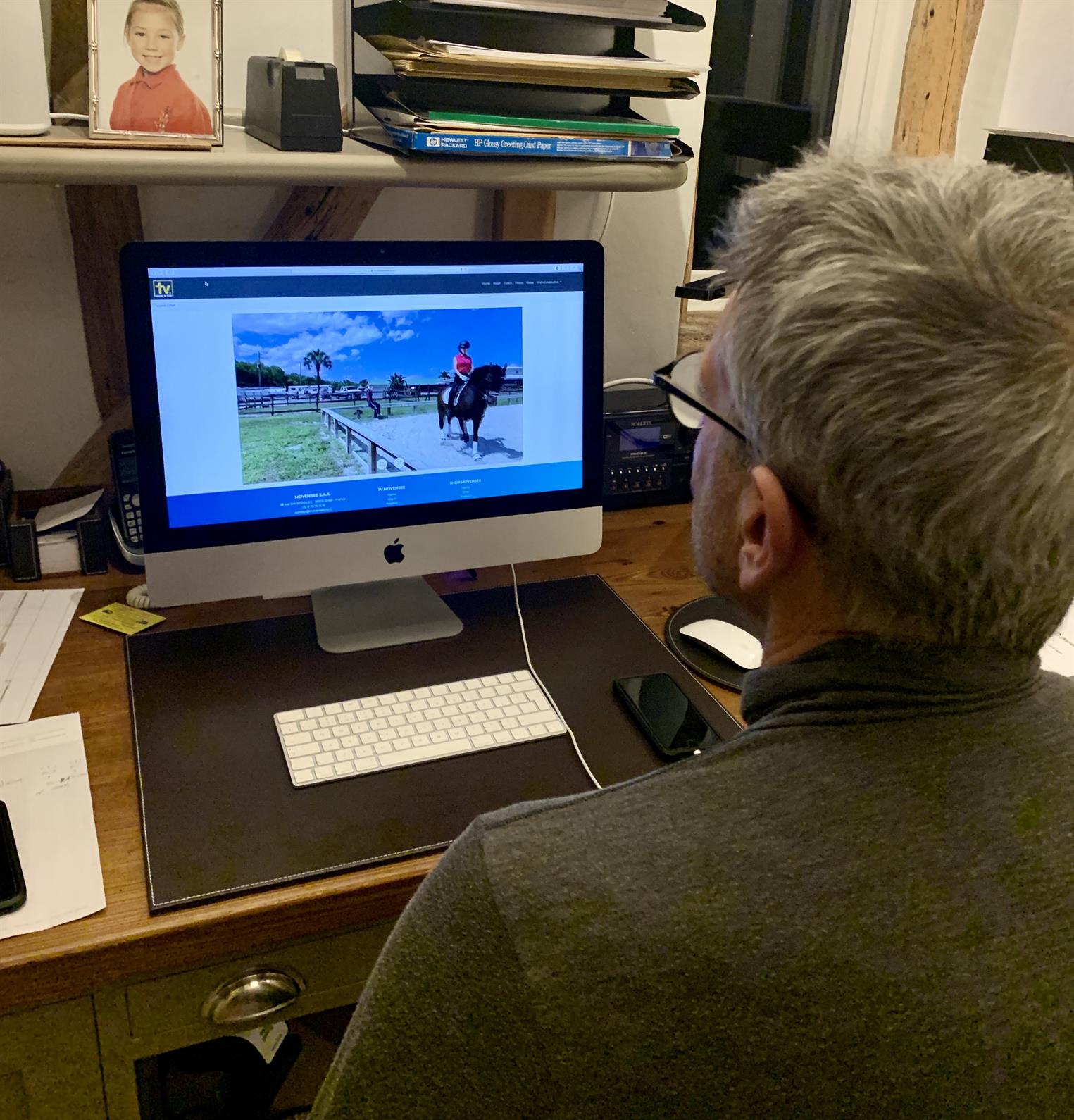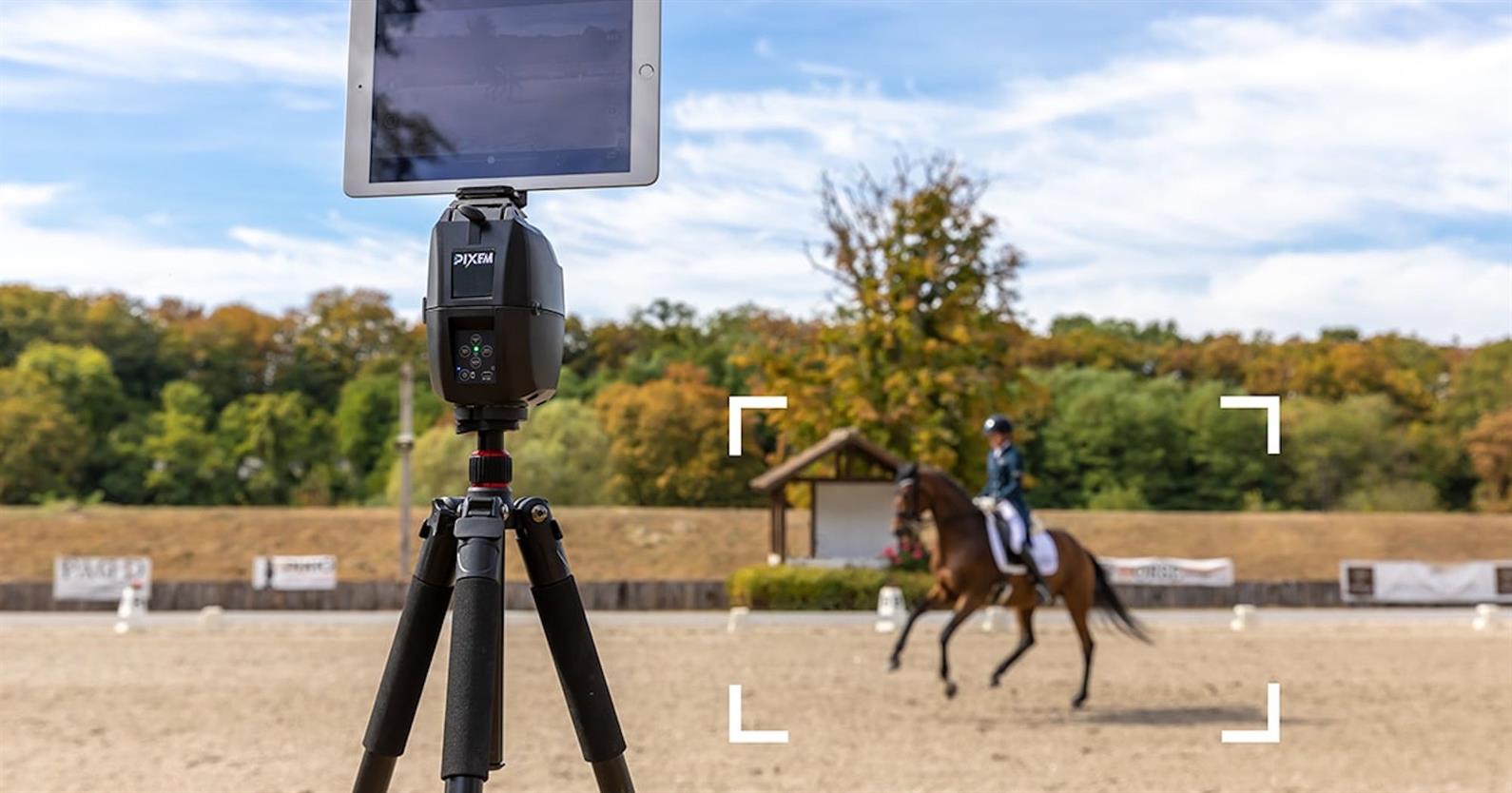Four years ago, the Adequan® U.S. Para Dressage Team had never won a medal at an FEI World Championships or a Paralympics. But in 2018, the team won four medals at the 2018 FEI World Equestrian Games™ in Tryon. In 2020, they reached the top of the FEI’s ranking list for the first time in the program’s history, with U.S. para dressage athlete Roxanne Trunnell holding the top spot among all FEI para dressage athletes across all Grades. What changed? The answer is Michel Assouline, who previously led the British para team to multiple gold medals before becoming the U.S. Para Dressage Chef d’Equipe.

Photo: Courtesy of Michel Assouline
In 2020, the Adequan U.S. Para Dressage Team was preparing for the Tokyo Olympic Games when the COVID-19 pandemic hit, the Olympics were postponed to 2021, and the Britain-based Assouline was separated from his team by the Atlantic Ocean. Assouline, whom the United States Olympic and Paralympic Committee recently named its Paralympic Coach of the Year, kept on coaching, using remote teaching strategies that have proved highly effective.
We sat down with him to learn how he was able to overcome remote-coaching challenges, maintain a safe connection with his riders, and keep the team ranked world No. 1.
One Step Ahead
Before the pandemic, Assouline was already supplementing live lessons with technology due to his travel schedule, which prohibited him from seeing riders consistently face to face. Assouline provided support and flexible training schedules through direct coaching using the Move ’N See video systems, as well as online judging, video ride critiques, and one-on-one meetings via video conferencing. He is recognized as one of the trailblazers and biggest advocates for e-coaching. When asked about introducing remote coaching to his students he replied, “I was remote-coaching before COVID because I kept traveling between Europe and the U.S. I found because of my schedule I could keep helping people with online coaching.”
Assouline added that the pandemic has opened doors for more things to be done remotely, and that e-coaching is the future. He was one step ahead.
Do Your Homework
The first step when introducing remote coaching into a program is doing research on the systems that are available and the pros and cons of each, Assouline advised. While there are many systems on the market, Assouline recommends the Pixio or Pixem systems designed by French company Move ’N See.
“They have done so much testing and research, I think that is the best place to start,” he said. "They have a lot of information on their website, as well as videos that help show what their products have to offer.”
Both the Pixio and Pixem systems are composed of three key components: a robot that moves the video camera, a wrist band worn by the rider that allows the robot to follow their movements, and three tracking beacons for more precise filming.
Share the Cost
Though Assouline considers the Move ’N See system the most reliable, its high price can be out of reach for some budgets. But Assouline has a solution for that. He recommends sharing the cost between riders or with other barns in order to decrease the initial cost. Once the system has been purchased, the software and the applications are free to use and are user-friendly.
After you have received and registered your system, it’s time to set it up. Assouline emphasized that setting realistic expectations for your first use is important, as a lot of technology is involved. Assouline notes that the set-up is of vital importance and can be a stumbling block if the user isn’t prepared.
“I tell coaches to prepare people well ahead,” he said. “It takes time to set up the system correctly. Don’t expect it to happen all in one day.”
Assouline recommends testing it locally first, before you start remote training. This will ensure that both the audio and video are working seamlessly when lesson time comes. Preparation and meticulous set up allow coach and rider to focus on training and get the most out of the experience.
Supplement with Cell Video
Assouline’s first step when introducing a new rider to the the system is sending them a how-to video he created that outlines the system’s ins and outs. “People question the reliability of the system, but I think often that is because they don’t do the setup properly or with enough patience,” he noted. “I made a video that demonstrates how to set it all up—the camera, the beacons, and all the components—and how best to position them.”
Once any issues are resolved, Assouline says the transition between in-person and remote lessons is seamless and is similar to giving a lesson using a headset.
Assouline also recommends supplementing live lessons with video footage shot on a cell phone, camera, or tablet and shared over email or text. "I supplement live remote lessons with video footage shot by a groom, trainer, or friend,” Assouline explained. “Students send that video, which I can analyze and then send back my comments.”
The Pixio system also allows riders to record their lessons and revisit them. “Accessing the recorded session with Pixio is an amazing tool, because the rider may decide to revisit a topic and ask the coach for an extra session to address it,” Assouline said.
Combining these methods allows students to watch their videos and compare the notes with the footage shot in order to better understand what their coach is seeing.
Tips for Top Performance
Move’N See sells two systems. Both use technology that can sometimes seem complicated to the new user, but Assouline shared insights he has collected over the years.

Photo: Courtesy of Move'N See
“The wrist band sends a signal to the camera so that it can follow the riders, and I have learned that the wrist band must always be fully charged or else it can lose connection,” Assouline said. “Another thing is about the SD card inside the robot, which moves the camera. This SD card must be updated regularly so as to have the newest firmware. I find if the system is not working and everything is in place, all it needs is for the firmware to be updated.”
A strong internet connection is also important. Without a strong wifi connection or phone signal, it can be difficult to get a clear picture or sound during the lesson. But once the system is up and running, Assouline says he feels as though he is right there with the rider throughout their entire ride.
Flexible and Focused
Remote coaching gives trainers the flexibility to be in the ring with their riders from anywhere in the world, but where does the United States’ No. 1 para dressage coach prefer to teach his lessons from?
“I like being in my office,” Assouline said. “I know I’ve got everything at the tip of my fingers. I have the tools I need, like computers, iPhones, and iPads if something goes wrong. I know I have everything on hand, and it’s all easy to access.”
He emphasized the importance of eliminating outside distractions. “It’s a room where I focus well,” Assouline said of his office. “I find my office creates a better environment for me to focus and give my best.”


